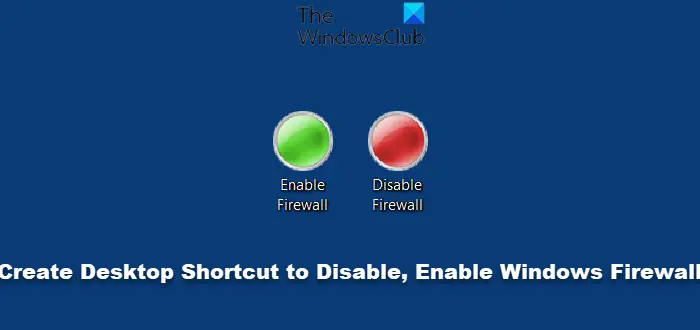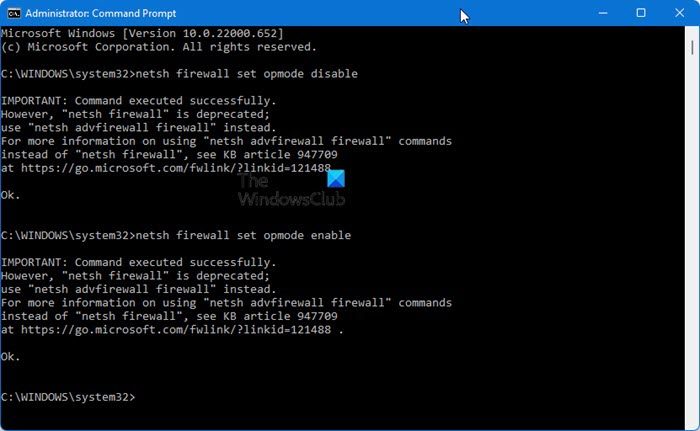Windows Firewall helps you to protect your PC from hackers and malicious software. It is a powerful tool that allows you to fine-tune the protection and notifications for different network profiles such as Home, Work, and Public. When you are connected to a public network like a library or a coffee shop, you may want to block all incoming connections for safety reasons. A Firewall safeguards your system against any uninvited trouble whether at home or at work.

If you need to disable or enable the Windows Firewall frequently, you may want to create a shortcut for it on your desktop instead of going all the way through the Control Panel. You may find this especially handy if you find the firewall obstructing any of your running tasks.
Disable or Enable Windows Firewall desktop shortcut
You can create a desktop shortcut as follows in Windows 11/10.
Right-click on your desktop > New > Shortcut.
To disable firewall, type or better still, copy-paste the following in the Location field.
netsh firewall set opmode disable
Click Next > Name it Disable Firewall > Finish. Give it a suitable icon.
To Enable the Firewall copy-paste instead:
netsh firewall set opmode enable
and name it Enable Firewall. Again give it a suitable icon.
You will have to Run it as Administrator. On clicking on both, a black CMD box will appear and then disappear with the letters OK in it.
Thus, you can easily disable or enable Windows Firewall on your Windows computer.
NOTE: The netsh firewall command has been deprecated.

Use “netsh advfirewall firewall” instead. That is:
To disable firewall, use:
netsh advfirewall set currentprofile state off
To Enable the Firewall use:
netsh advfirewall set currentprofile state on
Speaking of desktop shortcuts, you might want to check out Handy Shortcuts, – our freeware that lets you create tons of shortcuts in a click. Go here to learn how to lock Windows PC and create its desktop shortcut.
Read: How to open Windows Firewall
Is it safe to disable Windows Firewall?
No, it is not. The default settings of the Windows Firewall can protect against programs and remote access to your Windows PC. If you are testing something, it is ok to disable it temporarily; but enable it as soon as possible. That said, the best way to troubleshoot issues with the Firewall is to identify the program and add it as an exception in the firewall settings instead of disabling the security.
ANANDK,,,,,,,SEI GENIALE…..CON TUTTE LE TUE IDEE ” EUREKA ” DI ARCHIMEDE….CIAO ADAMAS
IMPORTANT: Command executed successfully.
However, “netsh firewall” is deprecated;
use “netsh advfirewall firewall” instead.
For more information on using “netsh advfirewall firewall” commands
instead of “netsh firewall”, see KB article 947709
at http://go.microsoft.com/fwlink/?linkid=121488 .
Thanks for this. Updating post.